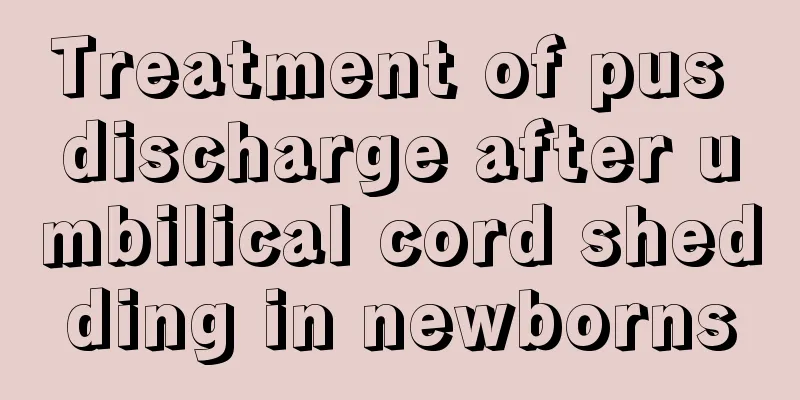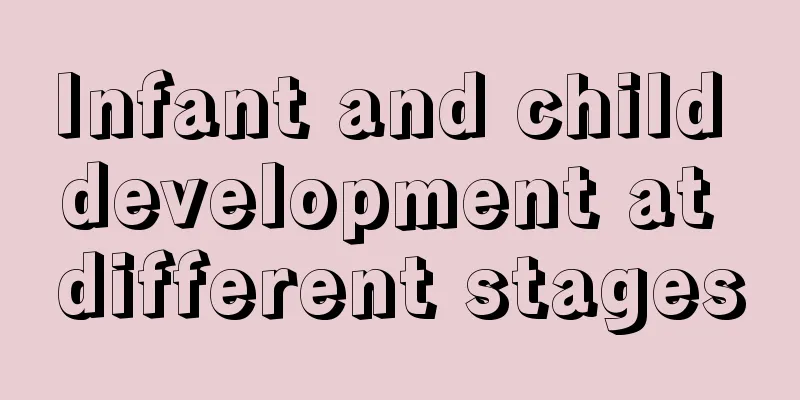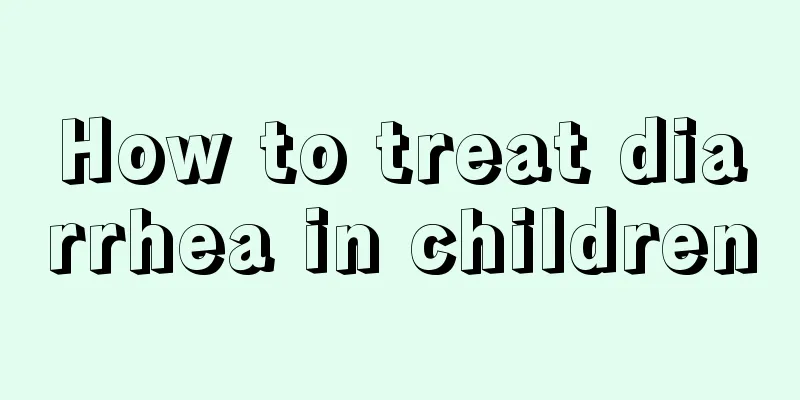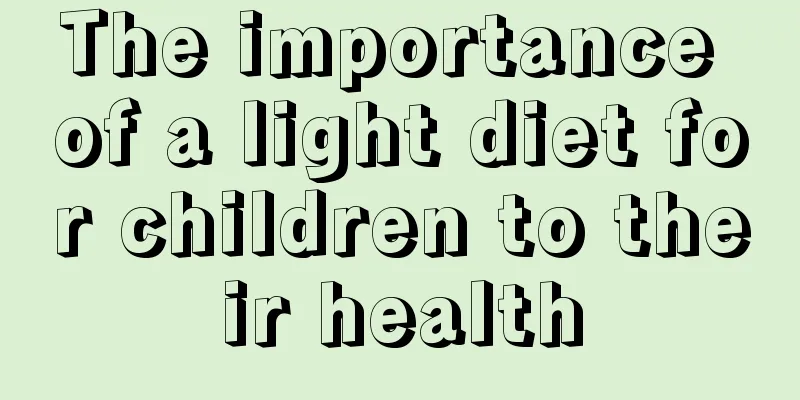What medicine should children take for headache
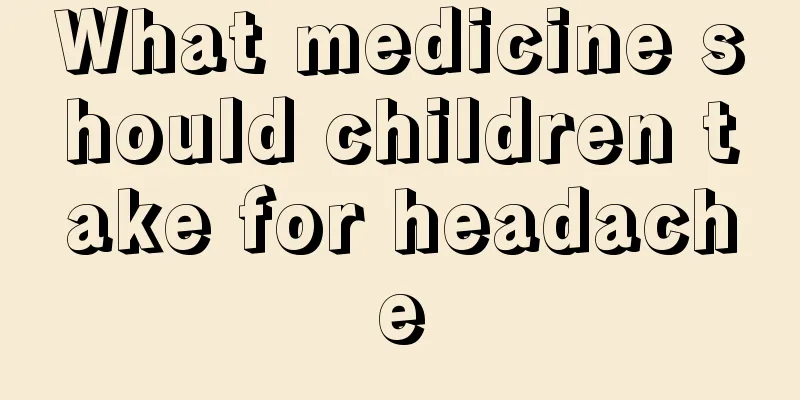
|
Headaches are a very common phenomenon among adults, but in modern society, many parents find that their children also suffer from headaches. Moreover, the causes of headaches in children and adults are generally different, so the right medicine is needed at this time. The child's body is relatively fragile and he cannot take medicine casually. So what medicine should the child take for headache? What medicine is good for children without fever and headache? As soon as a child has a fever, it is a taboo in medical treatment to use antipyretics immediately regardless of the reason. Fever is not all bad. First of all, fever is a signal that the child is sick. Secondly, fever is beneficial to mobilizing the child's immune function, which is beneficial to killing and eliminating bacteria and viruses, and promoting recovery from the disease. This is because after a fever occurs, the heart rate increases, and the heart rate increases by about 10-20 times for every degree Celsius increase in body temperature. The heartbeat speeds up, blood circulation is vigorous, and the amount of blood flowing to the inflamed area increases. On the one hand, this can dilute the bacteria and the toxins they produce. On the other hand, the white blood cell count also increases. In addition to directly destroying and engulfing bacteria and viruses, it can also produce an endogenous heat to produce antibodies that have the ability to kill bacteria or viruses, thereby promoting improvement of the disease. At the same time, the iron in the blood is temporarily stored in the liver. Bacteria need iron more than humans. Once iron is deficient, bacteria will find it difficult to grow, thus achieving the purpose of eliminating bacteria. If you use too many antipyretics as soon as you have a fever, not only will the above series of changes be difficult to achieve, but it may also mask the condition and delay treatment. In addition, the symptoms become atypical after the fever subsides, which also makes diagnosis difficult. Therefore, when you have a fever, do not rush to reduce it before the diagnosis is confirmed. Only choose the corresponding antipyretic analgesic when one of the following situations occurs: the fever is too high (above 39 degrees), especially in children with high fever convulsions. Although the fever is not too high, there are obvious headaches, insomnia, impaired consciousness, which affect the child's rest; due to persistent fever, the heart and lung function has been endangered, or the high fever cannot be tolerated, etc., antipyretic analgesics may be used as appropriate. After a fever is confirmed, do not simply reduce the fever, and do not use too many medications to reduce the fever. Generally speaking, if the body temperature is below 38 degrees, there is no need to take antipyretics. Just drink plenty of water (small amounts and multiple times) and rest in bed. If the fever is above 38.5 degrees, you can use a wool patch soaked in cold water to place on the forehead, armpits, thighs and other parts of the child to cool down. Ice packs will be more effective. In case of high fever, give the child an appropriate dose of antipyretic medicine under the guidance of a doctor. Don't be in a hurry and use medicine indiscriminately. Children with fever should follow the following dietary adjustments 1. Stay hydrated Water is better than medicine. When you have a fever and sweat a lot, it is necessary to drink warm water frequently to replenish your body. For infants under six months old, continue to breastfeed. Breast milk is easy to digest, can meet nutritional needs, and replenish water. Artificial feeding can be fed with diluted whole milk, i.e. Add 2 parts of milk powder to 1 part of water (2:1). Although the baby's milk intake is reduced, the water is replenished, which is more conducive to digestion and absorption by the baby. It is advisable for young children to drink boiled water when they have a fever. They can be fed some boiled water appropriately to supplement the body's vitamin C and enhance disease resistance. Drink enough water to keep your lips moisturized, but don't drink too much. 2. Liquid diet For young children with fever, the diet should mainly consist of liquid food, such as milk, lotus root powder, milk (with less oil), etc. You can also drink some mung bean soup or ice watermelon to help cool down, promote diuresis and fight disease. However, for infants (less than 6 months old) with diarrhea, who have poor resistance, weak gastric motility, and poor tolerance of gastric mucosa, cold drinks are not conducive to physical recovery and should be avoided. When the child's body temperature drops and his appetite improves, he can be fed semi-liquid food, such as minced meat porridge, noodles, rice porridge, egg drop porridge, and some easily digestible food (fish). The diet should be clean The principle is to eat light and easy to digest food, use less oil and salt, eat small meals frequently, and avoid spicy and irritating foods. But there is no need to avoid certain foods to prevent malnutrition and decreased resistance. 3. Take sugar and salt water If a young child has fever and diarrhea, the medicine can be taken multiple times. Take sugar and salt water. The preparation ratio is 500 ml of water, one teaspoon of sugar and half a bottle cap of salt. 500 ml can be taken within 4 hours. At the same time, you can supplement with electrolyte foods such as citrus, bananas and other fruits (high in potassium and sodium), milk and soy milk (containing calcium), rice soup, and pasta (containing zinc). For those with more severe symptoms, they should temporarily fast and receive intravenous drips to replenish water and electrolytes. After the diarrhea and vomiting are relieved, you can eat liquid food, such as rice soup, filtered vegetable juice, lotus root powder, etc., but you should avoid milk and soy milk (which can easily produce gas). Children with fever and cough should not eat too much to prevent vomiting. They should eat easily digestible food and less seafood and salty and greasy food to prevent allergies and coughing and aggravate symptoms. It is generally not recommended to inject immunoglobulin to increase the resistance of children with weak constitutions, because immunoglobulin is a blood product and its use has certain risks. Children with low resistance should exercise more, which is the key to strengthening their physical fitness. |
<<: Newborn baby girl menstruation
>>: The impact of hemangioma on the baby
Recommend
What are the causes of cerebral palsy in infants and young children?
Cerebral palsy in infants and young children is a...
Causes of morning abdominal pain in children
A good day often starts in the morning, but if yo...
What to do if your child has a hunchback?
We all say that knowledge changes destiny, and bo...
Motor development delay
The development of a baby's motor function is...
What are the symptoms and treatment of alcohol poisoning in children?
In family life, it is inevitable to encounter man...
What causes a child to sneeze and have a runny nose?
The symptoms that children usually have often mak...
What to do if the baby chokes and milk comes out of the nose
In the process of taking care of the baby, no mat...
What to do if a seven or eight-year-old child is disobedient
For children aged seven or eight, they already ha...
How to treat sinusitis in a two-year-old baby
Adults are very anxious when children get a littl...
Can ADHD in children be cured?
Some parents may find that their children are ver...
Children's mouth blisters
Most babies usually don't like to eat vegetab...
What are the clinical manifestations of ADHD in children?
Attention Deficit Hyperactivity Disorder (ADHD) i...
Is chickenpox contagious in children?
Chickenpox is a common disease in children and is...
What should I do if my baby has a stuffy nose and can’t sleep well? 3 solutions
If the baby has nasal congestion when sleeping at...
What should I do if my child's teeth become loose?
Every child will always encounter some bumps and ...
